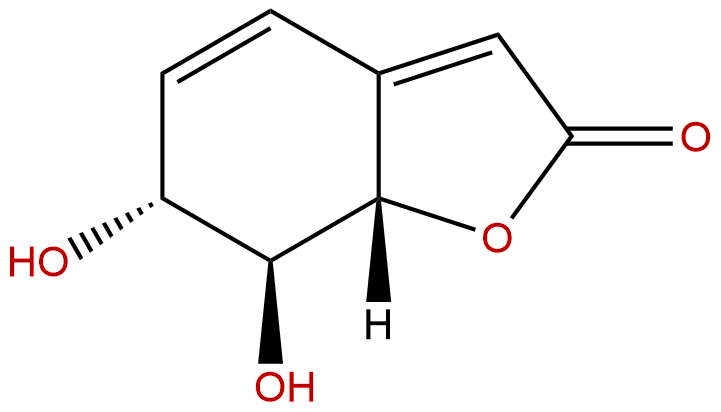
GriffonilideCAS No.:61371-55-9
|
||||||||||
 |
|
|
||||||||

| Catalogue No.: | BP0690 |
| Formula: | C8H8O4 |
| Mol Weight: | 168.148 |
Synonym name:
Catalogue No.: BP0690
Cas No.: 61371-55-9
Formula: C8H8O4
Mol Weight: 168.148
Botanical Source: roots of Griffonia simplificola
Purity: 95%~99%
Analysis Method: HPLC-DAD or/and HPLC-ELSD
Identification Method: Mass, NMR
Packing: Brown vial or HDPE plastic bottle
Can be supplied from milligrams to grams.
For Reference Standard and R&D, Not for Human Use Directly.
Inquire for bulk scale.
Description:
Griffonilide is islolated from the tubers of Tylosema esculentum (morama).
References:
Phytother Res. 2015 Jul 21.
Therapeutic and Prophylactic Potential of Morama (Tylosema esculentum): A Review.
Tylosema esculentum (morama) is a highly valued traditional food and source of medicine for the San and other indigenous populations that inhabit the arid to semi-arid parts of Southern Africa.
METHODS AND RESULTS:
Morama beans are a rich source of phenolic acids, flavonoids, certain fatty acids, non-essential amino acids, certain phytosterols, tannins and minerals. The plant's tuber contains Griffonilide, behenic acid and starch. Concoctions of extracts from morama bean, tuber and other local plants are frequently used to treat diarrhoea and digestive disorders by the San and other indigenous populations. Information on composition and bioactivity of phytochemical components of T. esculentum suggests that the polyphenol-rich extracts of the bean testae and cotyledons have great potential as sources of chemicals that inhibit infectious microorganisms (viral, bacterial and fungal, including drug-resistant strains), offer protection against certain non-communicable diseases and promote wound healing and gut health. The potential antinutritional properties of a few morama components are also highlighted.
CONCLUSIONS:
More research is necessary to reveal the full prophylactic and therapeutic potential of the plant against diseases of the current century. Research on domestication and conservation of the plant offers new hope for sustainable utilisation of the plant.